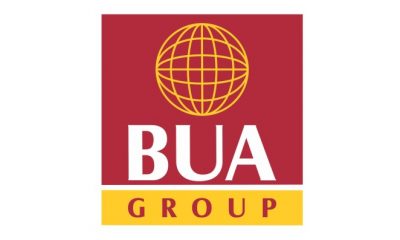Oil & Energy
Investors Are Looking Long Term In LNG Markets
This winter saw something that made exporters of liquefied natural gas very happy: a more than a 1,000-percent surge in LNG prices on the spot market from a year earlier as a cold spell gripped swathes of Asia. What could make them even happier is the fact this surge has seriously compromised the appeal of spot market deals.
Long-term contracts are reclaiming their territory. Traditionally, natural gas was bought and sold under long-term contracts pegged to the price of crude oil. This benefited sellers when oil was expensive and reduced their income when oil was cheap. In either case, the sellers had long-term secure markets for their gas.
With LNG came the spot market where you could sell a cargo more than once while it was still in the ocean. The increased popularity of LNG gave rise to a dynamic spot market where prices reflected demand and supply much more accurately than long-term oil-linked contracts. Buyers loved the spot market when LNG supply exceeded demand and brought prices to historic lows. Yet they didn’t love it so much last month when a million British thermal units topped $30, from less than $2 in May 2020.
As Reuters’s commentator Clyde Russell noted in a column in late January, the gas world was moving towards a greater preference for spot market deals thanks to the abundant—even excessive availability of LNG. Yet one sudden surge in demand may have been enough to cause some rethinking: after all, long-term contracts do have their advantages, chief among them the guaranteed availability of the commodity.
It is no wonder, then, that one of the world’s biggest producers of liquefied natural gas is grabbing the opportunity to secure its market share. Earlier this month, Qatar’s energy minister warned LNG importers that they would face more price spikes unless they bet on the certainty of long-term contracts.
What’s more, Saad al-Kaabi said, as quoted by the Financial Times, that new LNG supply was going to be tighter now, with U.S. shale oil—and gas—production in survival rather than growth mode and with international energy companies shelving projects amid spending cuts. At least half of LNG projects planned to start in the next few years, al-Kaabi said, were not going to materialize.
“There isn’t a lot of money that will be helping oil and gas companies,” the official told the FT in an interview. “But the pure economics of these projects do not fly any more at low oil prices.”
What flies, however, is the economics of Qatar’s own LNG production expansion plans. Last week, the tiny Gulf nation announced what it called the largest LNG project in the world that will bring its annual production capacity from 77 million tons to 110 million tons by 2025. The expansion will cost Qatar close to $29 billion and will cement its place as the world’s top LNG exporter.
With such plans in place, it makes perfect sense for Qatar to promote the security of long-term supply, since this also means the security of revenues for it as a producer. But with oil prices on the rise and spot market LNG prices falling—March deliveries to north Asia are already below $10 per mmBtu—buyers may start having second thoughts.
In the period between 2016 and 2020, according to Reuters, Asian spot market prices for natural gas were on average 27.2 percent lower than Brent-indexed long-term contract prices. Even so, only a third of the gas that enters Asia is bought on the spot market.
There have been hopes that the lower prices on the spot market would help it mature and make the foundation of an international gas market that is not that closely linked to crude oil. But the lower average price comes with much greater price volatility: 51 percent higher than price volatility in Brent-pegged prices over 2016-2020, according to Reuters.
Volatility is great when the market is in oversupply but not that great when demand surges, as the recent events in Asia once again proved. But there is also another factor working to the advantage of long-term Brent-indexed prices. Storage space for liquefied natural gas is limited. This means that even if importers fill up all the available space in preparation for the winter, it may not be enough to secure the fuel they need for their thermal power plants.
With long-term contracts, on the other hand, you don’t need to worry about storage space because the seller guarantees you deliveries. Brent-indexed long-term contracts have been called archaic, but it looks like they are here to stay, according to analysts.
“If buyers don’t secure long-term deals they will see spikes every winter and they will pay a hefty price,” Qatar’s al-Kaabi said.
“People thought this is a cheap commodity and you can have it whenever you want and nobody wanted long-term contracts,” he added. “[But] one or two shutdowns in Qatar or Australia and you’re dead.”
The way to avoiding death appears to be a single one: long-term contracts. However, the fact that the security of global supply hinges on just two huge producers may—and even should—become a cause for worry, especially in an environment where long-term contracts dominate the market.
Slav first published this article in London-based Oilprice.com
Oil & Energy
FG Woos IOCs On Energy Growth
The Federal Government has expressed optimism in attracting more investments by International Oil Companies (IOCs) into Nigeria to foster growth and sustainability in the energy sector.
This is as some IOCs, particularly Shell and TotalEnergies, had announced plans to divest some of their assets from the country.
Recall that Shell in January, 2024 had said it would sell the Shell Petroleum Development Company of Nigeria Limited (SPDC) to Renaissance.
According to the Minister of State for Petroleum Resources (Oil), Heineken Lokpobiri, increasing investments by IOCs as well as boosting crude production to enhancing Nigeria’s position as a leading player in the global energy market, are the key objectives of the Government.
Lokpobiri emphasized the Ministry’s willingness to collaborate with State Governments, particularly Bayelsa State, in advancing energy sector transformation efforts.
The Minister, who stressed the importance of cooperation in achieving shared goals said, “we are open to partnerships with Bayelsa State Government for mutual progress”.
In response to Governor Douye Diri’s appeal for Ministry intervention in restoring the Atala Oil Field belonging to Bayelsa State, the Minister assured prompt attention to the matter.
He said, “We will look into the issue promptly and ensure fairness and equity in addressing state concerns”.
Lokpobiri explained that the Bayelsa State Governor, Douyi Diri’s visit reaffirmed the commitment of both the Federal and State Government’s readiness to work together towards a sustainable, inclusive, and prosperous energy future for Nigeria.
While speaking, Governor Diri commended the Minister for his remarkable performance in revitalisng the nation’s energy sector.
Oil & Energy
Your Investment Is Safe, FG Tells Investors In Gas
The Federal Government has assured investors in the nation’s gas sector of the security and safety of their investments.
Minister of State for Petroleum Resources (Gas), Ekperikpe Ekpo, gave the assurance while hosting top officials of Shanghai Huayi Energy Chemical Company Group of China (HUAYI) and China Road and Bridge Corporation, who are strategic investors in Brass Methanol and Gas Hub Project in Bayelsa State.
The Minister in a statement stressed that Nigeria was open for investments and investors, insisting that present and prospective foreign investors have no need to entertain fear on the safety of their investment.
Describing the Brass project as one critical project of the President Bola Tinubu-led administration, Ekpo said.
“The Federal Government is committed to developing Nigeria’s gas reserves through projects such as the Brass Methanol project, which presents an opportunity for the diversification of Nigeria’s economy.
“It is for this and other reasons that the project has been accorded the significant concessions (or support) that it enjoys from the government.
“Let me, therefore, assure you of the strong commitment of our government to the security and safety of yours and other investments as we have continually done for similar Chinese investments in Nigeria through the years”, he added.
Ekpo further tasked investors and contractors working on the project to double their efforts, saying, “I want to see this project running for the good of Nigeria and its investors”.
Earlier in his speech, Leader of the Chinese delegation, Mr Zheng Bi Jun, said the visit to the country was to carry out feasibility studies for investments in methanol projects.
On his part, the Managing Director of Brass Fertiliser and Petrochemical Ltd, Mr Ben Okoye, expressed optimism in partnering with genuine investors on the project.
Oil & Energy
Oil Prices Record Second Monthly Gain
Crude oil prices recently logged their second monthly gain in a row as OPEC+ extended their supply curb deal until the end of Q2 2024.
The gains have been considerable, with WTI adding about $7 per barrel over the month of February.
Yet a lot of analysts remain bearish about the commodity’s prospects. In fact, they believe that there is enough oil supply globally to keep Brent around $81 this year and WTI at some $76.50, according to a Reuters poll.
Yet, like last year in U.S. shale showed, there is always the possibility of a major surprise.
According to the respondents in that poll, what’s keeping prices tame is, first, the fact that the Red Sea crisis has not yet affected oil shipments in the region, thanks to alternative routes.
The second reason cited by the analysts is OPEC+ spare capacity, which has increased, thanks to the cuts.
“Spare capacity has reached a multi-year high, which will keep overall market sentiment under pressure over the coming months”, senior analyst, Florian Grunberger, told Reuters.
The perception of ample spare capacity is definitely one factor keeping traders and analysts bearish as they assume this capacity would be put into operation as soon as the market needs it. This may well be an incorrect assumption.
Saudi Arabia and OPEC have given multiple signs that they would only release more production if prices are to their liking, and if cuts are getting extended, then current prices are not to OPEC’s liking yet.
There is more, too. The Saudis, which are cutting the most and have the greatest spare capacity at around 3 million barrels daily right now, are acutely aware that the moment they release additional supply, prices will plunge.
Therefore, the chance of Saudi cuts being reversed anytime soon is pretty slim.
Then there is the U.S. oil production factor. Last year, analysts expected modest output additions from the shale patch because the rig count remained consistently lower than what it was during the strongest shale boom years.
That assumption proved wrong as drillers made substantial gains in well productivity that pushed total production to yet another record.
Perhaps a bit oddly, analysts are once again making a bold assumption for this year: that the productivity gains will continue at the same rate this year as well.
The Energy Information Administration disagrees. In its latest Short-Term Energy Outlook, the authority estimated that U.S. oil output had reached a record high of 13.3 million barrels daily that in January fell to 12.6 million bpd due to harsh winter weather.
For the rest of the year, however, the EIA has forecast a production level remaining around the December record, which will only be broken in February 2025.
Oil demand, meanwhile, will be growing. Wood Mackenzie recently predicted 2024 demand growth at 1.9 million barrels daily.
OPEC sees this year’s demand growth at 2.25 million barrels daily. The IEA is, as usual, the most modest in its expectations, seeing 2024 demand for oil grow by 1.2 million bpd.
With OPEC+ keeping a lid on production and U.S. production remaining largely flat on 2023, if the EIA is correct, a tightening of the supply situation is only a matter of time. Indeed, some are predicting that already.
Natural resource-focused investors Goehring and Rozencwajg recently released their latest market outlook, in which they warned that the oil market may already be in a structural deficit, to manifest later this year.
They also noted a change in the methodology that the EIA uses to estimate oil production, which may well have led to a serious overestimation of production growth.
The discrepancy between actual and reported production, Goehring and Rozencwajg said, could be so significant that the EIA may be estimating growth where there’s a production decline.
So, on the one hand, some pretty important assumptions are being made about demand, namely, that it will grow more slowly this year than it did last year.
This assumption is based on another one, by the way, and this is the assumption that EV sales will rise as strongly as they did last year, when they failed to make a dent in oil demand growth, and kill some oil demand.
On the other hand, there is the assumption that U.S. drillers will keep drilling like they did last year. What would motivate such a development is unclear, besides the expectation that Europe will take in even more U.S. crude this year than it already is.
This is a much safer assumption than the one about demand, by the way. And yet, there are indications from the U.S. oil industry that there will be no pumping at will this year. There will be more production discipline.
Predicting oil prices accurately, even over the shortest of periods, is as safe as flipping a coin. With the number of variables at play at any moment, accurate predictions are usually little more than a fluke, especially when perceptions play such an outsized role in price movements.
One thing is for sure, though. There may be surprises this year in oil.
lrina Slav
Slav writes for Oilprice.com.
-
News4 days ago
Telcoms Seek Tariff Hike To Offset Soaring Costs
-
Nation4 days ago
Ogun PDP Chairman, Adebutu Trade Blames Over Electoral Defeat
-

 Rivers1 day ago
Rivers1 day agoNDDC Board Performance Is A Launch Pad For Tinubu 2027 – Says MOSIEND …Says No Vacancy In Aso Rock
-

 Niger Delta22 hours ago
Niger Delta22 hours agoDiri, Others Task NDDC, MNDD On Collaboration …As Tinubu Promises East-West Road Completion
-
Niger Delta4 days ago
PIA: Bayelsa Ready For Littoral Communities’ Mapping Exercise
-

 Business4 days ago
Business4 days agoRetailers Explain Price Drop In Cement Cost
-

 Foreign1 day ago
Foreign1 day agoIraqi Social Media Influencer Um Fahad Shot Dead By Motorbike Gunman In Baghdad
-
Oil & Energy21 hours ago
PHED Implements April 2024 Supplementary Order To MYTO

